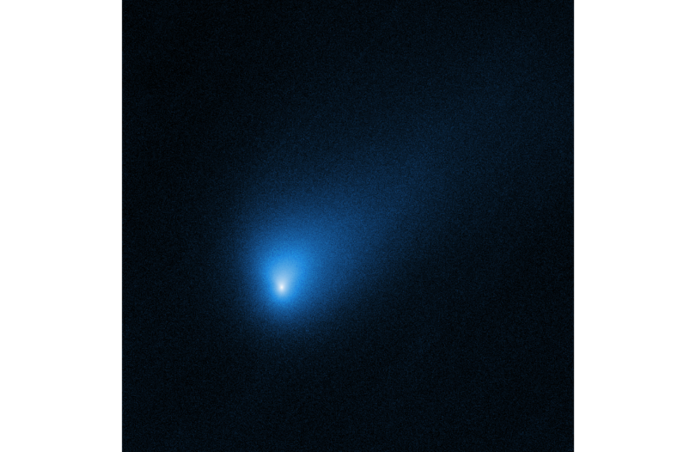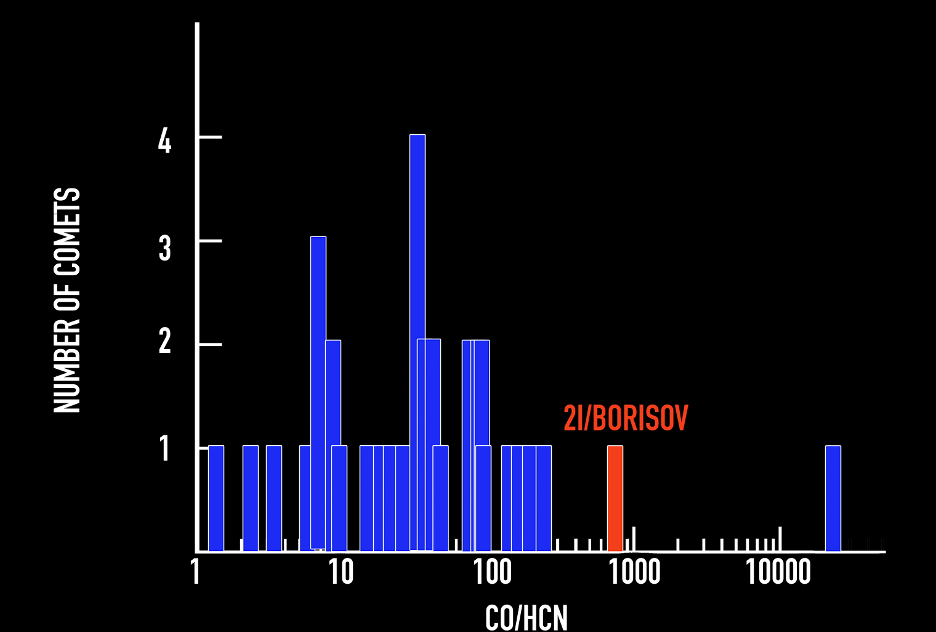NASA Astronomers Reveal 2I/Borisov’s Alien Composition

After nearly a year of waiting for the interstellar comet 2I/Borisov to make its closest pass by the Sun, astronomers were finally able to uncover its composition—and it’s much different than expected.
Ever since 2I/Borisov was first discovered traveling through our solar system back in 2019, observers have been keeping a close eye on it. Astronomers knew it was going to pass by the Sun quite closely, and even though that could potentially cause it to break up (which it did), it presented the opportunity of uncovering its origins and answering some questions in cometary science. An early initial study, which was published on arXiv only a short time after its arrival, disappointingly suggested that 2I/Borisov’s composition would be not much different than most of the comets previously studied. However, as the comet reached its perihelion or its closest approach to the Sun, and its ices began to melt, scientists found it released unusually high amounts of carbon monoxide (CO)—more than any other comet had before.
Comet Composition
Comets in our solar system are all relatively similar to each other, sharing the same basic compositions. All comets observed thus far release similar gases as they pass their perihelion, including hydrogen cyanide (the most easily detectable) and carbon monoxide. CO levels are variable between solar system comets, but generally don’t go above or below a certain point. Going into it, the team of astronomers from NASA’s Goddard Flight Center who studied 2I/Borisov expected to discover something similar, especially considering early studies proposing its potential composition. Instead, they found that 2I/Borisov released between 9 and 26 times more CO than a typical solar-system comet.
The team, which was led by Martin Cordiner of the Catholic University of America and Stefanie Milam of the NASA Goddard Space Flight Center, was able to obtain the spectra data they needed by using the Atacama Large Millimeter/submillimeter Array (ALMA) in Chile. Despite initially finding typical levels of hydrogen cyanide from the comet, their data, which is published on Nature Astronomy, clearly shows that 2I/Borisov had a much higher CO concentration than most comets.

Future of Cometary Science
2I/Borisov’s high CO levels suggest that the comet formed somewhere very cold. Milam states that “The comet must have formed from material very rich in CO ice, which is only present at the lowest temperatures found in space, below -420 degrees Fahrenheit (-250 degrees Celsius).” But how did it form? Where did it form exactly? The researchers don’t have any specific answers just yet, but this discovery is sure to open up a multitude of fascinating questions to be answered in the world of cometary science.